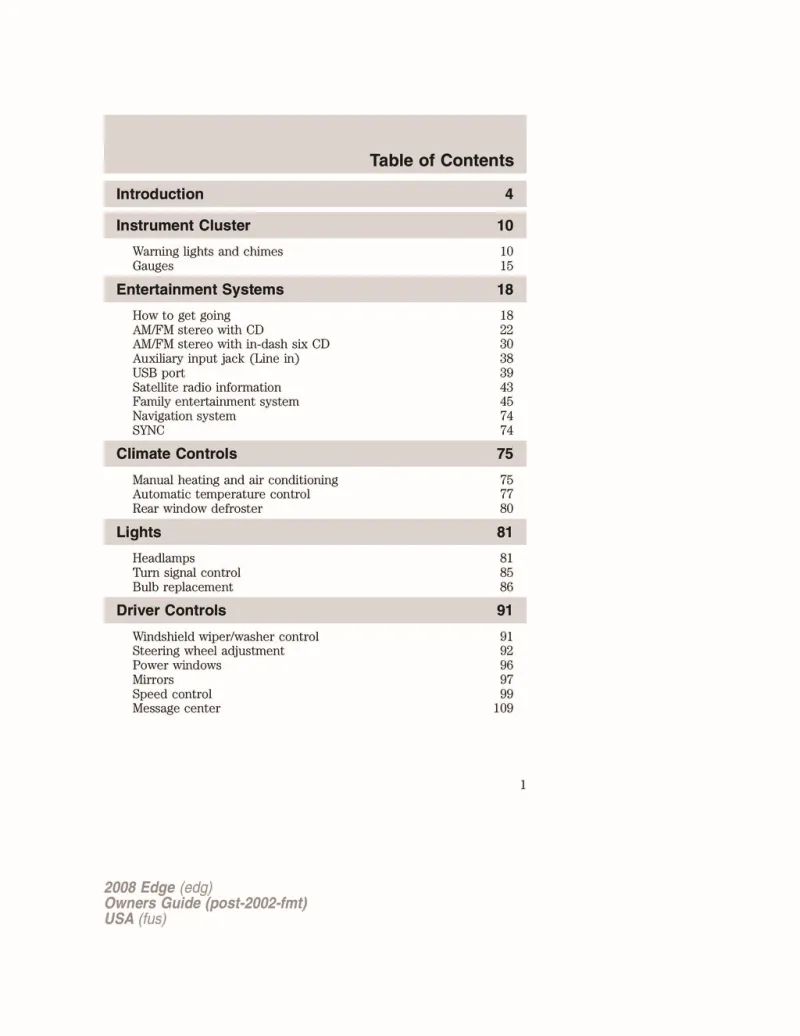2008 Ford Edge Owner's Manual

Table of Contents
2008 Ford Edge Overview
Introduction
The 2008 Ford Edge is a stylish crossover SUV that combines versatility with a touch of modern luxury. With its sleek lines and rugged stance, it appeals to those who want a vehicle that stands out in the crowded SUV market. This model is perfect for families and individuals alike, featuring spacious interiors and innovative technology that enhances the driving experience. Ford has ensured that the Edge provides not only a great ride but also a comfortable environment for all passengers.
Powertrains
The 2008 Ford Edge comes with a robust powertrain solution that provides an energetic and smooth driving experience. It is powered by a 3.5-liter V6 engine that delivers an impressive 265 horsepower and 250 lb-ft of torque. The engine is paired with a six-speed automatic transmission, providing seamless gear transitions and strong acceleration. Buyers can choose from front-wheel drive or all-wheel drive configurations, enabling suitable performance for various driving conditions.
Trims
Features
The 2008 Ford Edge is packed with features that cater to modern drivers. Standard equipment includes keyless entry, a manually tilting and telescoping steering wheel, and the option for a rear DVD entertainment system. Safety features are also prominent, with available options like curtain side airbags and electronic stability control. Whether for day-to-day activities or road trips, the Edge offers practicality without compromising on style.
Owners Manual
The 2008 Ford Edge Owners Manual serves as an indispensable guide for new owners, providing thorough instructions on vehicle operation, maintenance schedules, safety protocols, and troubleshooting tips. It is designed to ensure that drivers make the most of their Edge, highlighting essential information about features and care that contribute to longevity and performance. Proper utilization of the manual will enhance the ownership experience, emphasizing Ford's commitment to customer satisfaction.
User manual download
The Ford Edge owner manual for the 2008 model year is to be found in PDF downloadable format on this page. The owner manual for the model year 2008 is free and in English, but the repair manuals are usually not easy to get and may cost more.
Manual Questions
Fill the form below and someone will help you!

